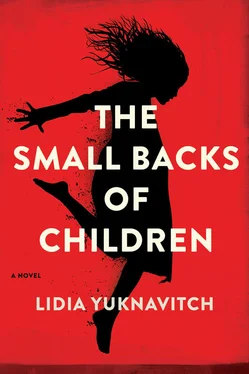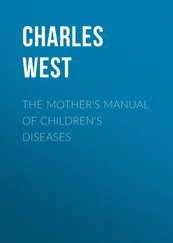And what her mother — her famous concert pianist mother — did next was. . well, a performance worthy of an ovation. Brava.
Her mother used the notoriety and fame she had garnered as a pianist to be something even bigger, better: She became a triple-A martyr, a mother of tragedy and pain, and — most important — a spokesperson. She headed every lost cause, she was awarded community prizes, was featured on Good Morning America . No mother in the country could outperform her, at least when it came to volunteering for lost causes, illnesses, and deformities. Cancer, AIDS, MS, cerebral palsy, Parkinson’s, lupus, leprosy (yes, there is still leprosy), and all this WAY before she went third world. You get the picture.
Total abandonment of her daughter to the hired caregivers and medical staff and physical, speech, emotional, and spiritual counselors in favor of the martyr limelight.
What her father did with his devastation was a great bit more concrete; perhaps the simplest things we think about gender are utterly true.
It was his role to take the impaired daughter on excursions, so that her seemingly retarded little life didn’t suck outrageously, but only mildly.
So he took her all kinds of places, even though it made his heart have a hole in it.
He took her to the movies.
He took her to McDonald’s.
He took her to libraries.
He took her to the big red bull’s-eye of Target.
He took her to Shari’s.
He took her to water parks.
He took her to boatyards.
He took her to the beach.
He took her to bookstores.
He took her hiking in the forest.
He took her to museums.
He took her on the light rail system.
Again.
Again.
He took her horseback riding.
He took her go-cart racing.
He took her on Ferris wheels.
He took her to record stores.
He took her to music concerts.
He took her to buildings he’d designed, walking her through light and shadow and form.
He.
He.
He was more tired than any man alive, since she expressed her outrageously embarrassing glee at every one of these places he took her, all of it while wearing a helmet, and everyone always stared and said things under their breath, I mean everyone, I mean always, and at some point, no matter where they were or how it was playing out, she’d get to some frenetic moment where she was in danger of injuring herself or others, a tiny amount of drool sliding from her mouth, pee darkening the front of her crotch, the look of. . Well, I think you can picture her grimace-smiley too-white face, right?
And so it was that one day, inside his role, this particular thing happened. She was in one of those inflatable worlds that appear at county fairs. . the kind of inflatable hut kids can crawl inside and jump up and down. You know what I mean.
She entered.
He left.
No, really.
He left.
He left his daughter, he left his wife, his family, his life, radically and without hesitation.
Not that much later — four years, to be precise — her mother was giving a lecture on the child-tragedy circuit. Afterward, a neurosurgeon came up to her and said he knew a doctor in Europe who specialized in the type of operation they’d been told was impossible, and so nearly by accident she got her daughter a different medical team and a world-famous surgeon in Europe, and guess what?
They operated successfully and her so-called retardation disappeared and she bloomed into a completely normal, beautiful, American teen.
Completely normal, except for the pearly skull scar and the emotional scars for fucking life.
And that’s how she comes to be sitting in an airplane with the poet pretending to be her past. Because she’s a stand-in. She’s a retarded girl again, being taken to Europe for experimental treatment again, a story from her real past invading her present. Because without makeup and face jewelry and vintage clothes and hair products, without anything on her head besides that disgusting helmet, she looks much younger than she is. Just past puberty. Which means they can swap her. Which means they can use her special retard-girl identity papers to enter the country with her, but leave the country with a different girl. Later, someone will come back and get her and take her back home.
It’s the least she can do.
And besides, the poet had said, this is the most radical performance art she’ll ever do in her life.
Emotional cripple. Adult need machine. Fuck addict. American artist. She rubs the scar on her head. She rubs the letter against her flesh. The last thought she thinks before she drops into a twenty-something-year-old vodka sleep is: I hate women.
For more than a year, the girl and the widow live together in the widow’s house while her childhood shifts. When the girl arrives she is eleven. When the girl leaves she is nearly thirteen.
Inside, the widow starts to teach the girl everything she knows about art. The history of photography, painting, music, literature. “Look at this poem. How it travels down the page in lines, not sentences. How its beauty is vertical, like a body.” The girl puts her fingers on the page, against the words, tracing their meanings, touching them and touching them. Silently mouthing.
The widow shows her poetry and science, philosophy and myths from all over the world. She teaches her how religion and science each rely on a violent faith between creation and destruction. She shows her how the history of art carries with it the same duality. She shows her the body — Christ’s body endlessly crucified, bodies in war and sacrifice, the never-ending bodies of women, bodies in pleasure or pain or sleep or death, bodies in rapture, tortured bodies, bodies in prayer, bodies in the static pose of a portrait. The widow tells the girl, “Do not listen to what any society tells you about the body — the body is the metaphor for all experience. A woman’s body more than any other. Like language, its beautiful but weaker sister. Look at this poem. This painting. Look at these photographs. The body doesn’t lie.”
The widow weaves the importance of expression and representation into the smallest details of an ordinary life. She milks the goat and steals the chickens’ eggs while telling stories of archetypal animals. She lights the fire and cleans the dishes while reciting poetry of love or war. She walks miles to the nearest village and brings back underground writings and photos, the same as milk and bread and sugar and coffee and ink and paper, making sure to detail the seriousness of these suppressed objects. She is careful to explain to the girl how it is that human expression is the highest value in life, but so too is death, in this place and time they find themselves inhabiting. The girl takes in everything, rarely speaking, her listening and watching a kind of devouring.
One day the girl is taking a bath and calls out. The widow comes into the tiny bathroom and the water surrounding the girl’s legs is clouded with crimson. She slaps the girl in the face and smiles and kisses her on the cheeks. She says, “May you bloom.” The girl doesn’t flinch. The widow tells her, “This is the first language of your body. It is the word ne . When you bleed each month, as when the moon comes and goes in its journey, you leave the world of men. You enter the body of all women, who are connected to all of nature.” The girl asks, “Why is it the word ne ?” The widow responds, “When you bleed, this word is more powerful than any word you could ever speak. It is a blood word. It binds you to animals and trees and the moon and the sun. Where men take blood in the world in hunting and war, women give blood. It is the word ne because it closes the room of a woman’s body to men.” The widow places her hands into the water and says, “Good. You are alive. You and I are alive.”
Читать дальше












